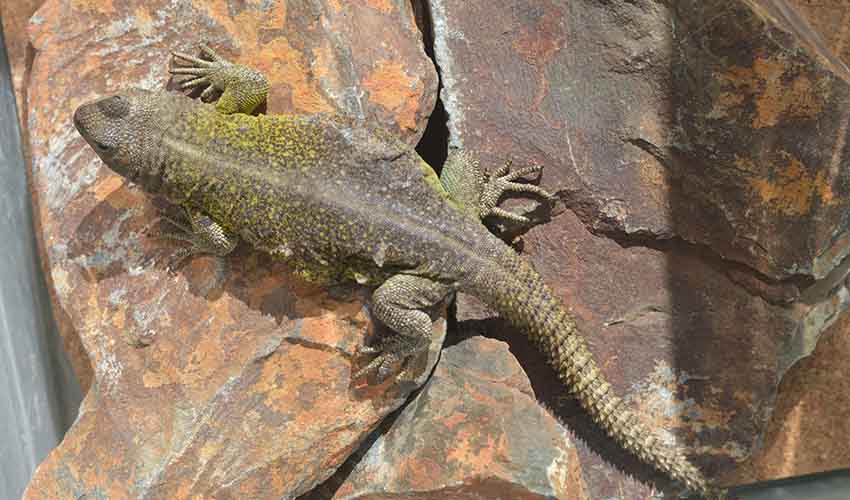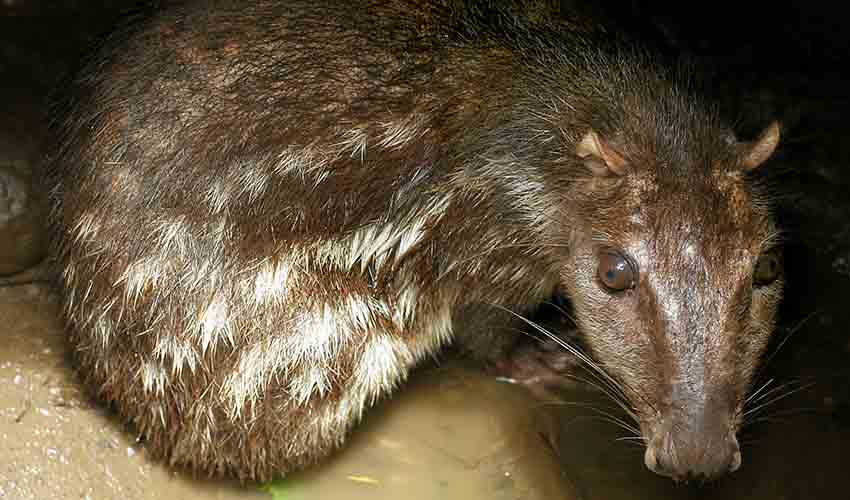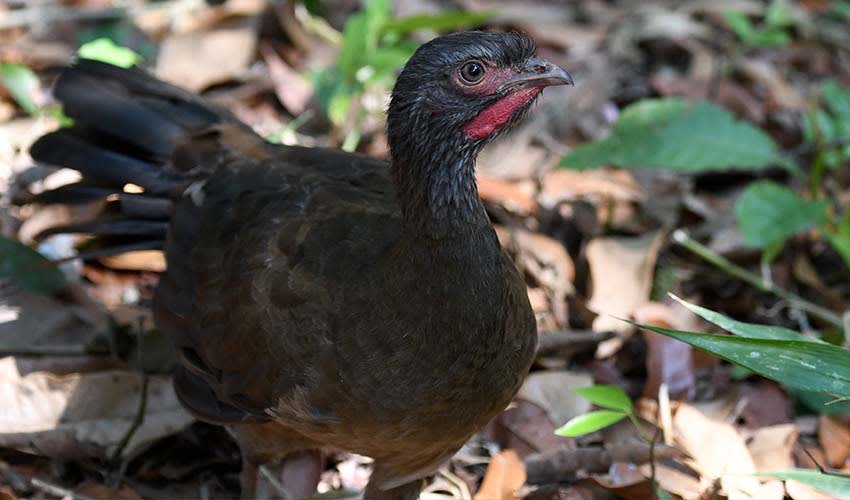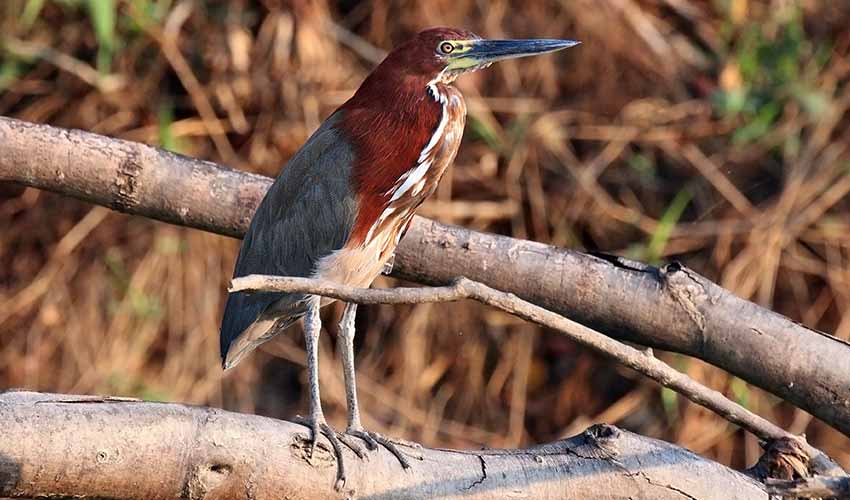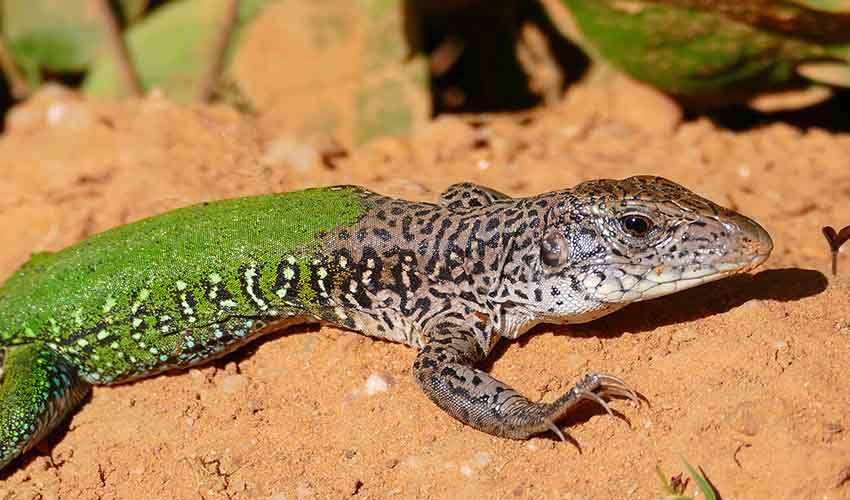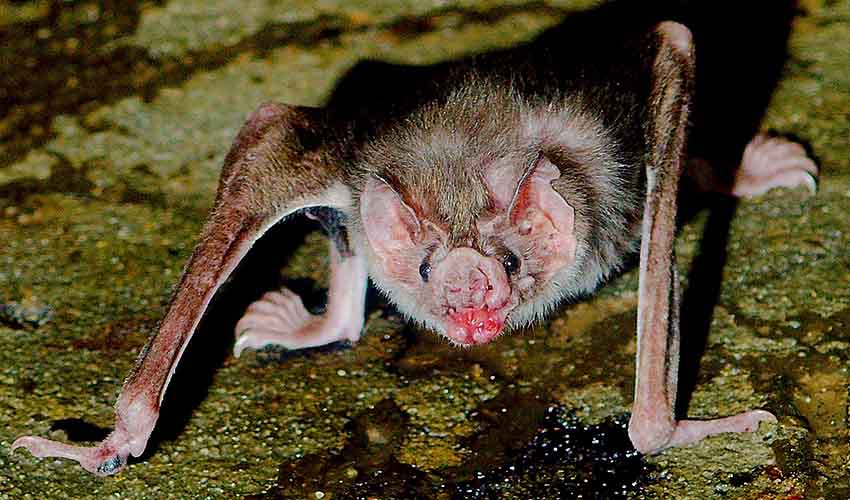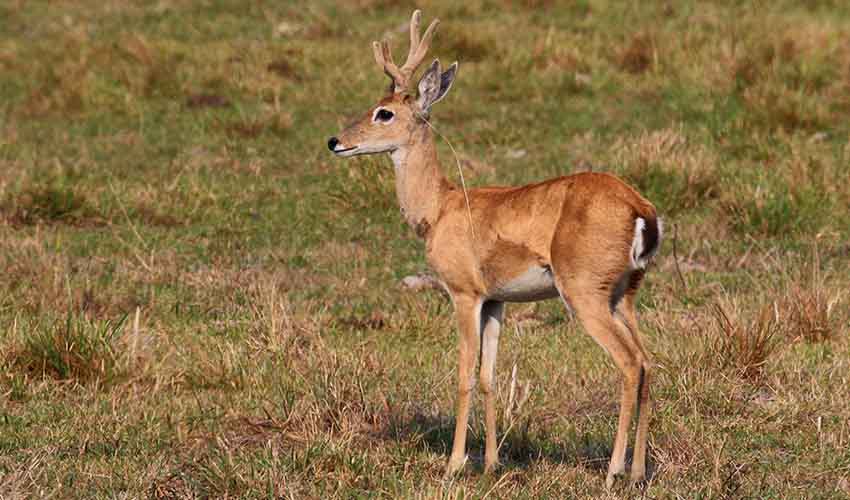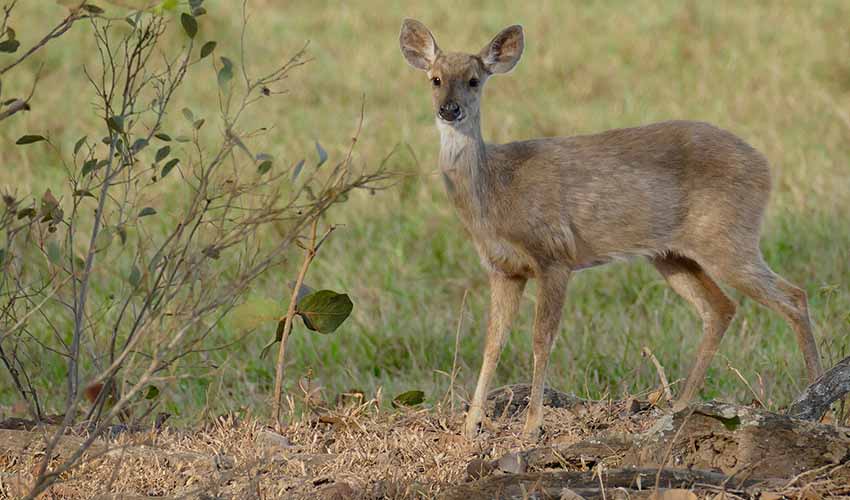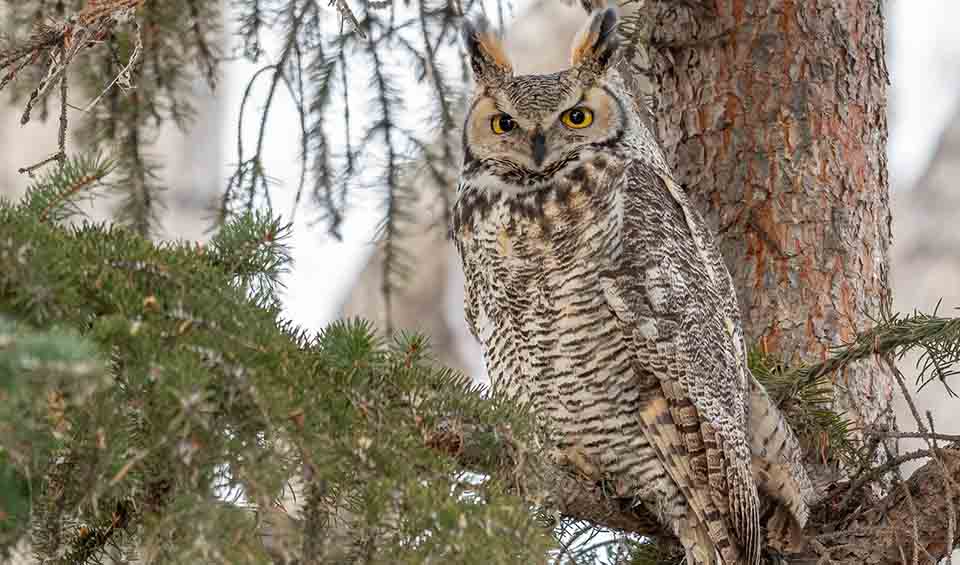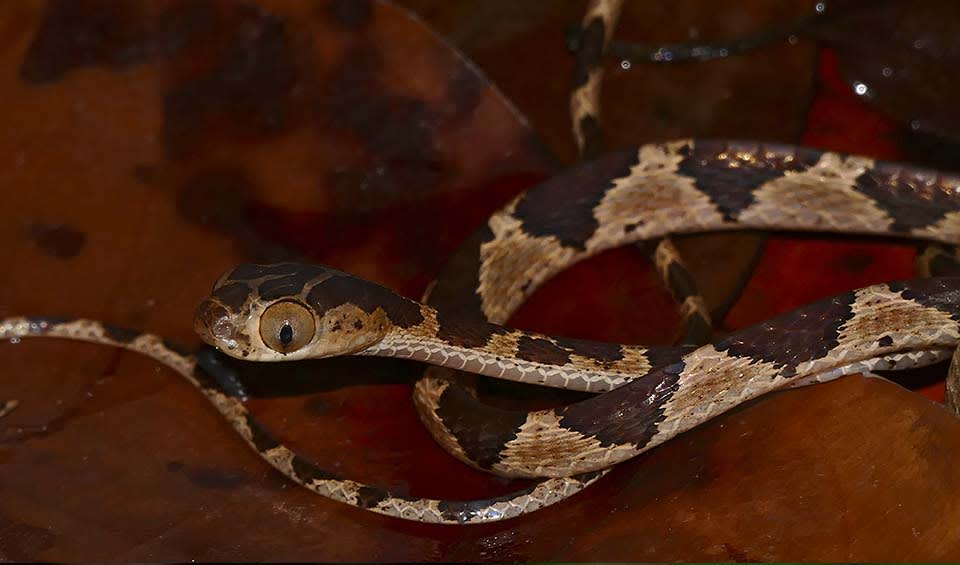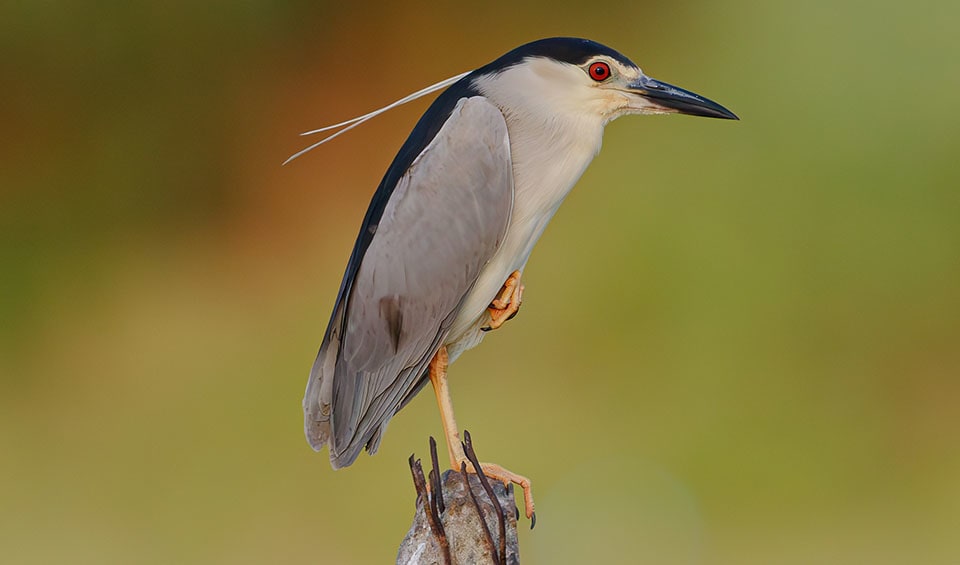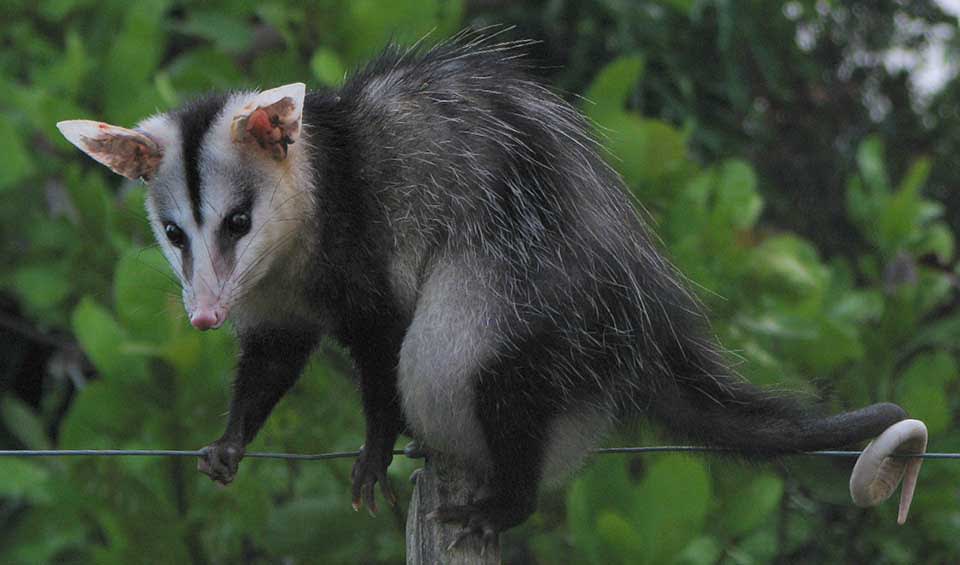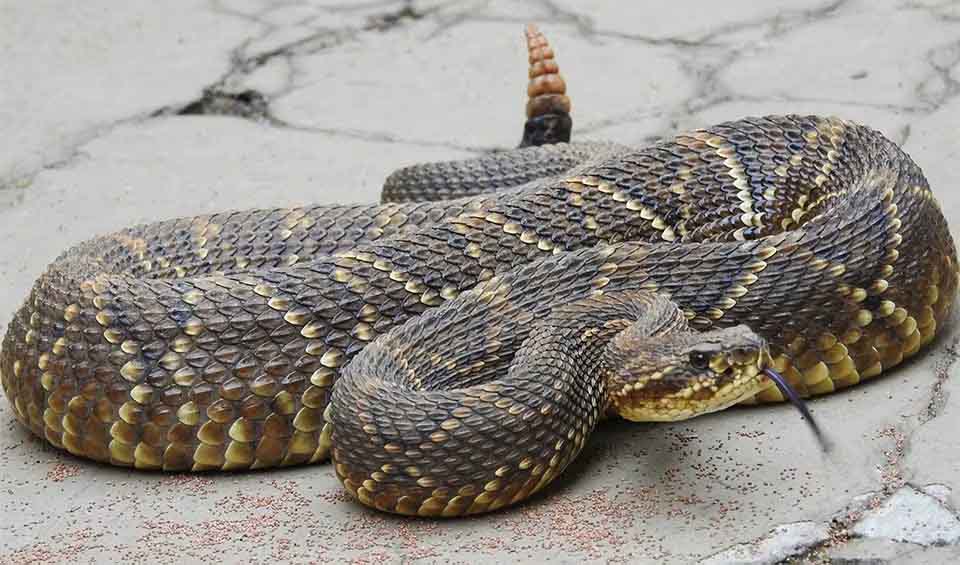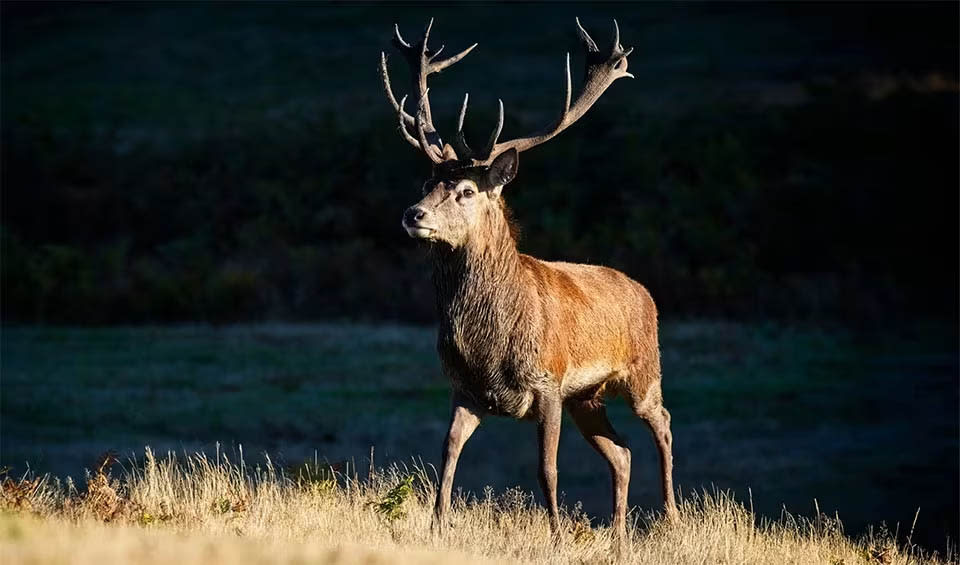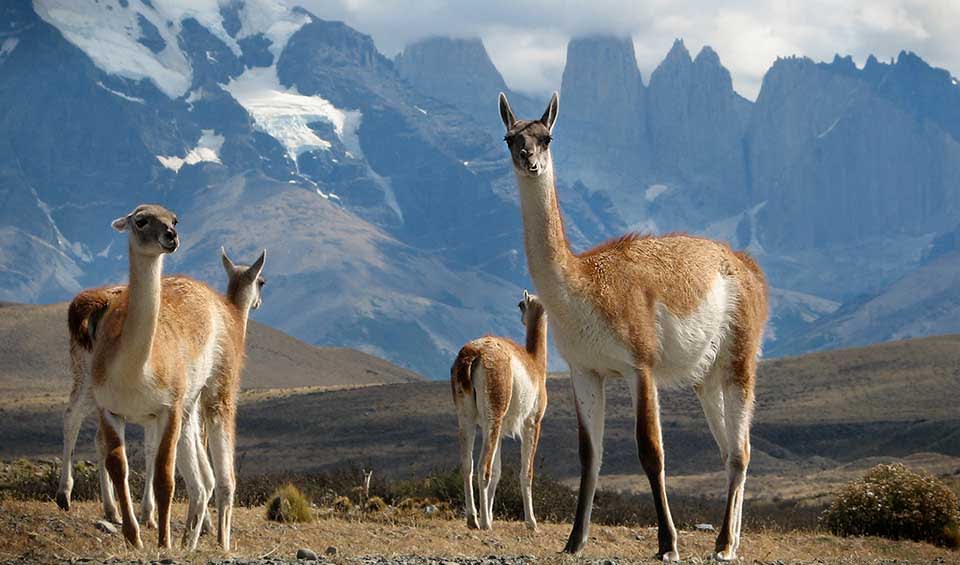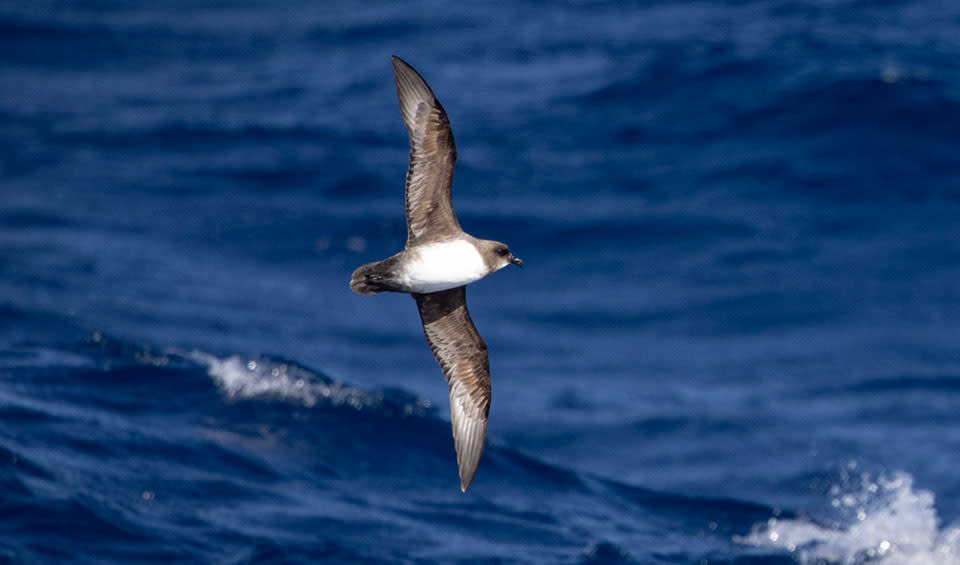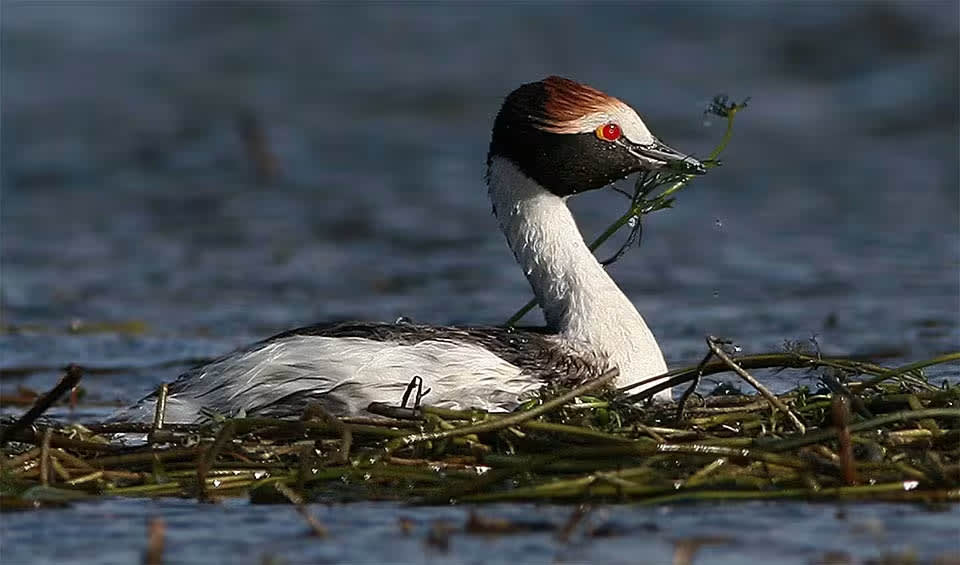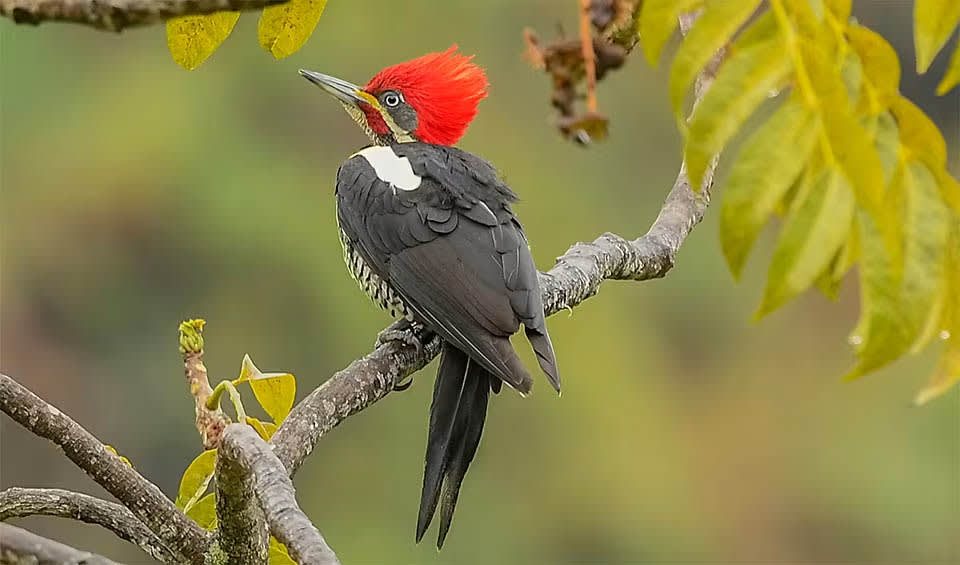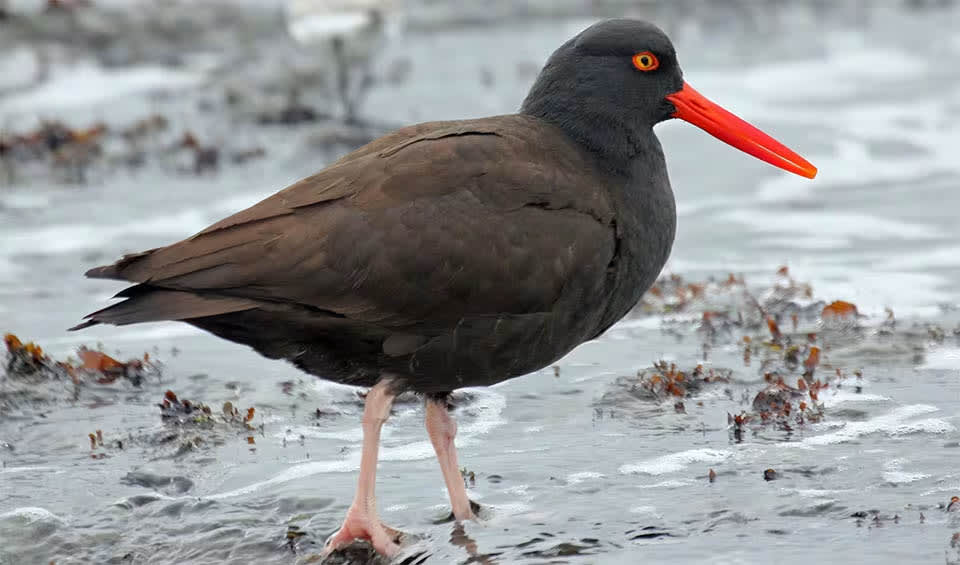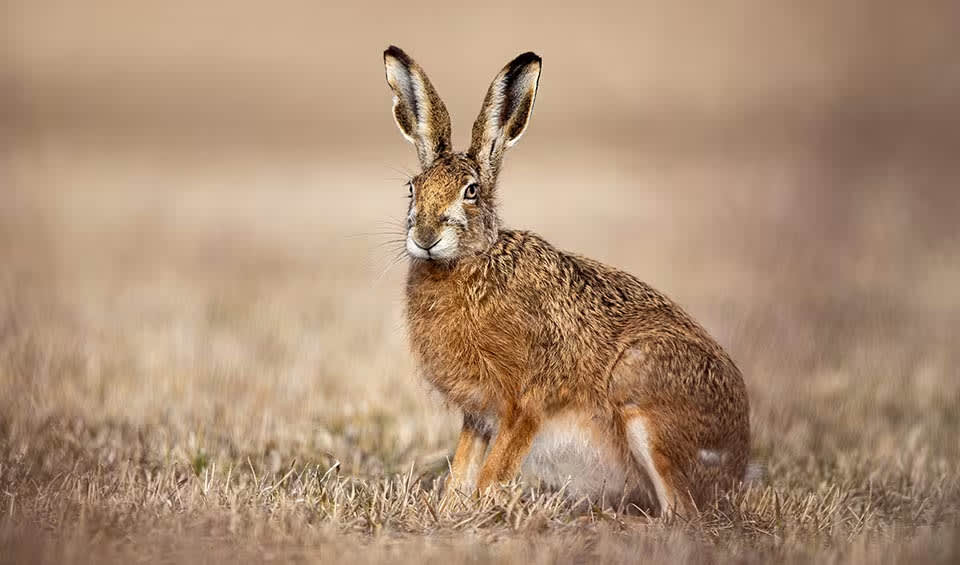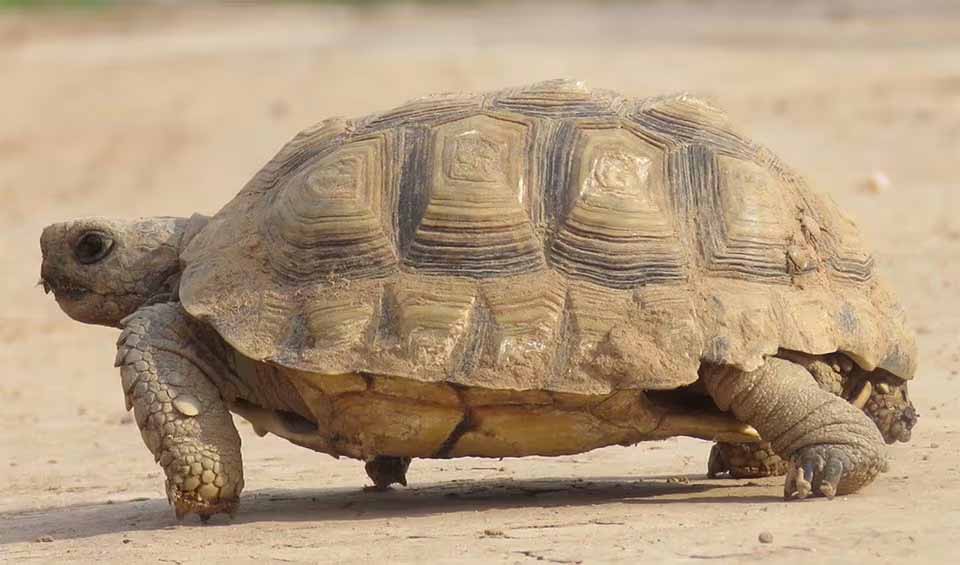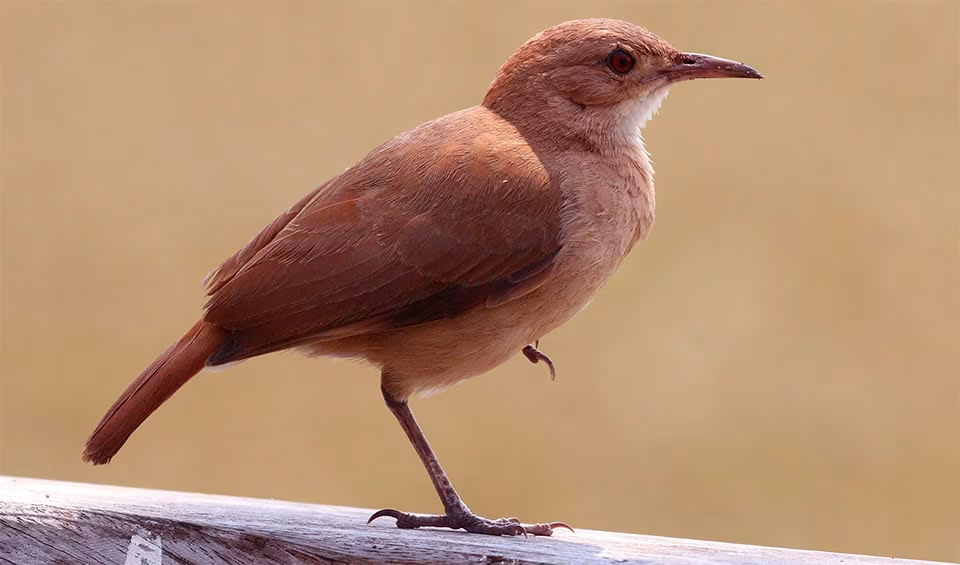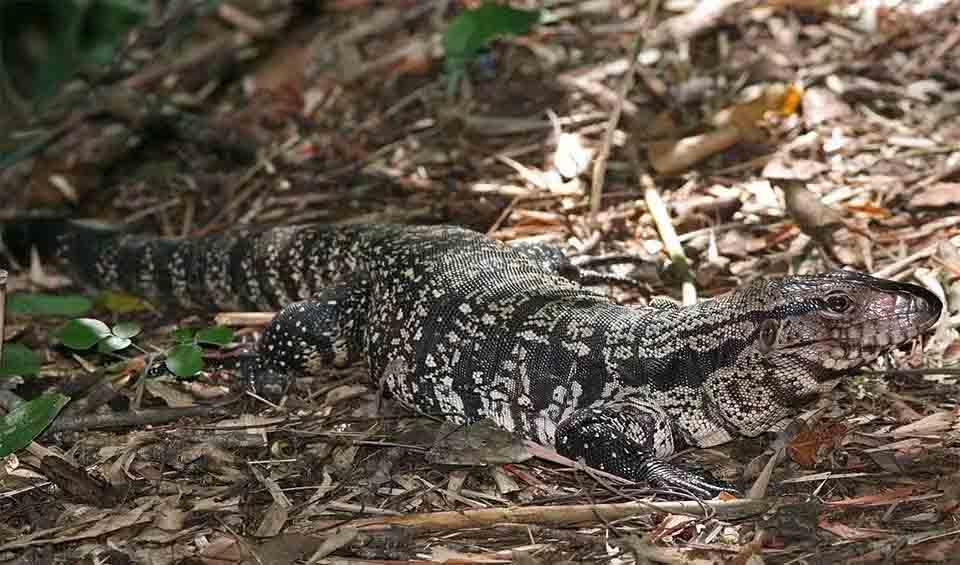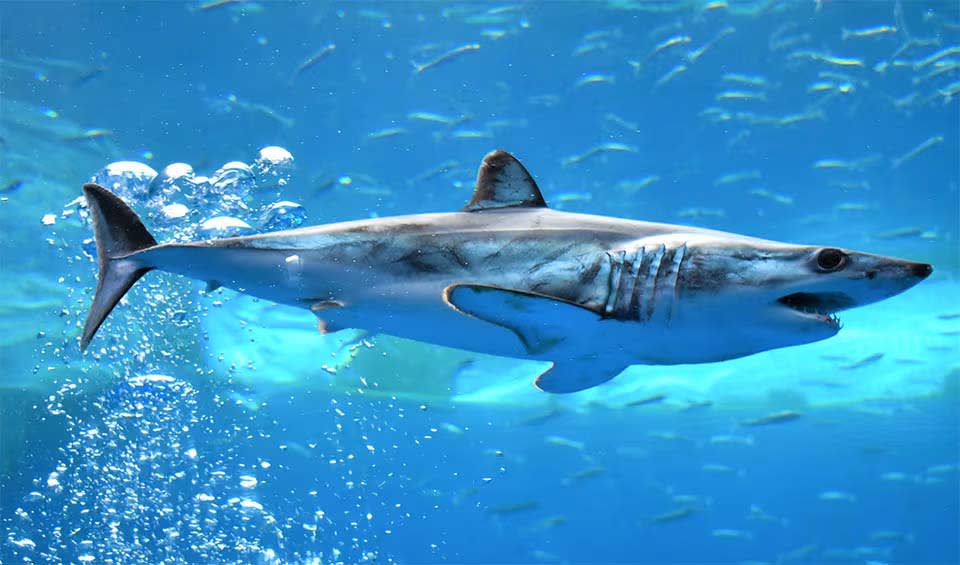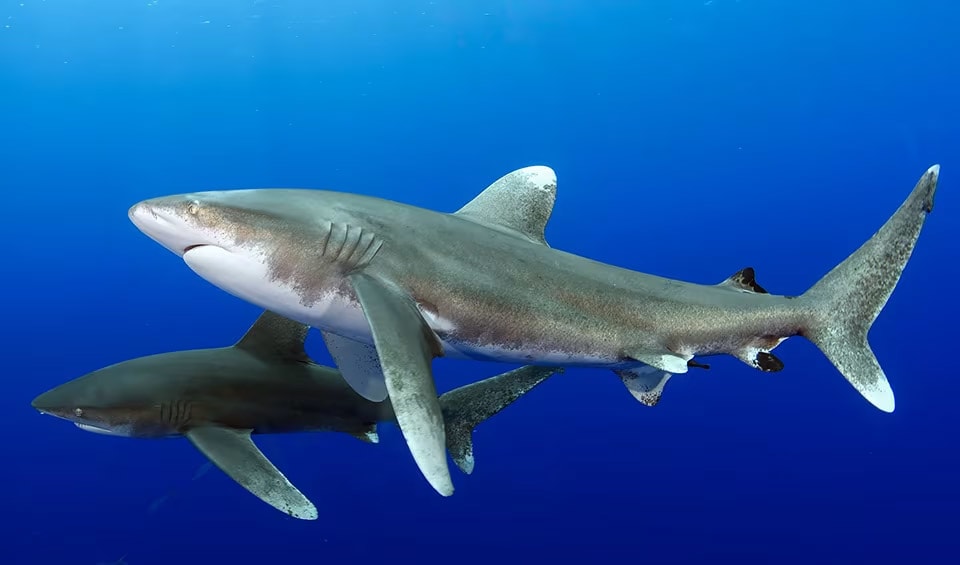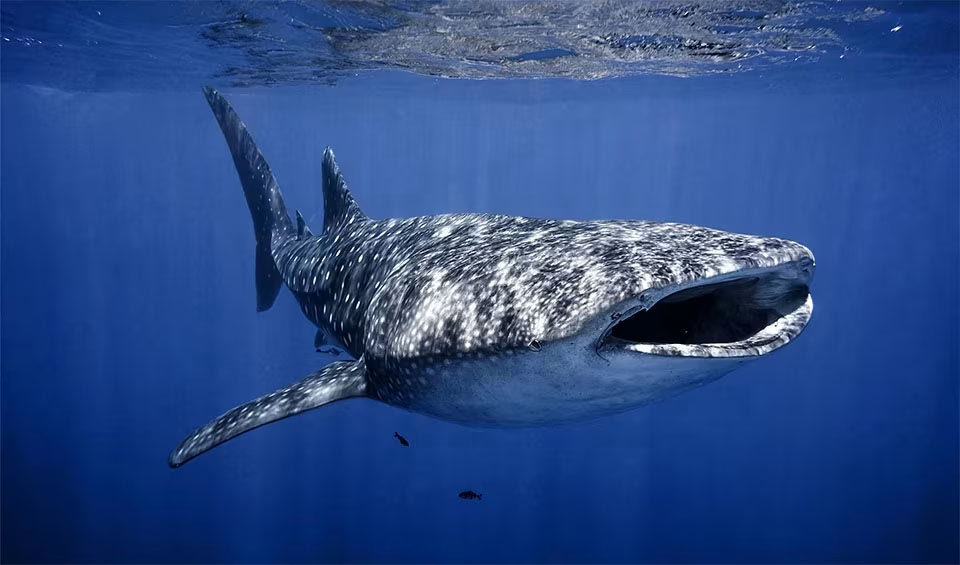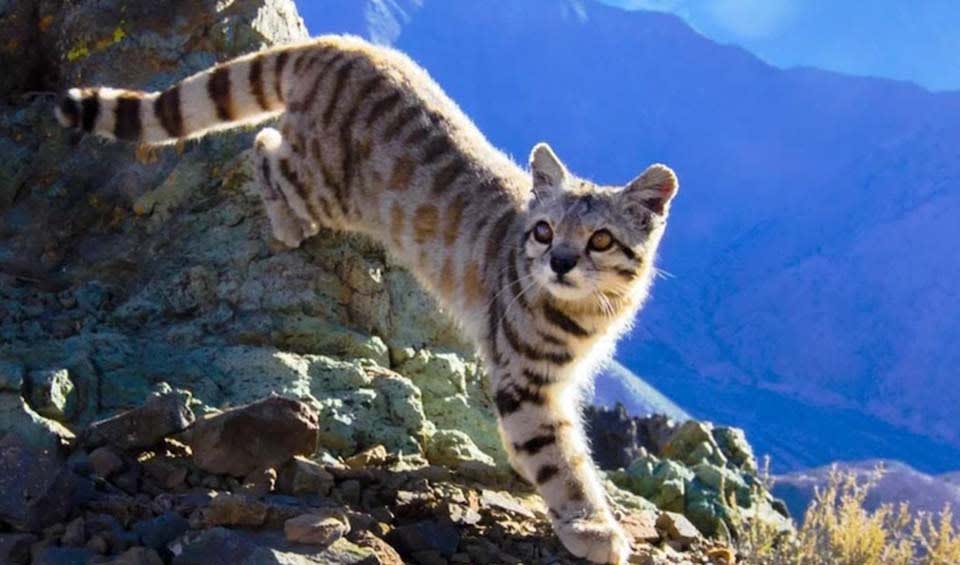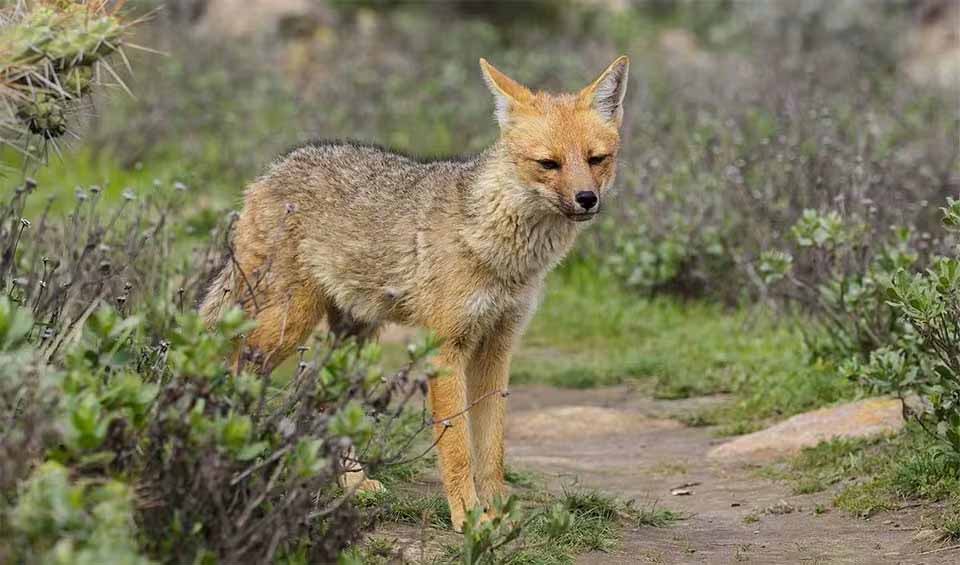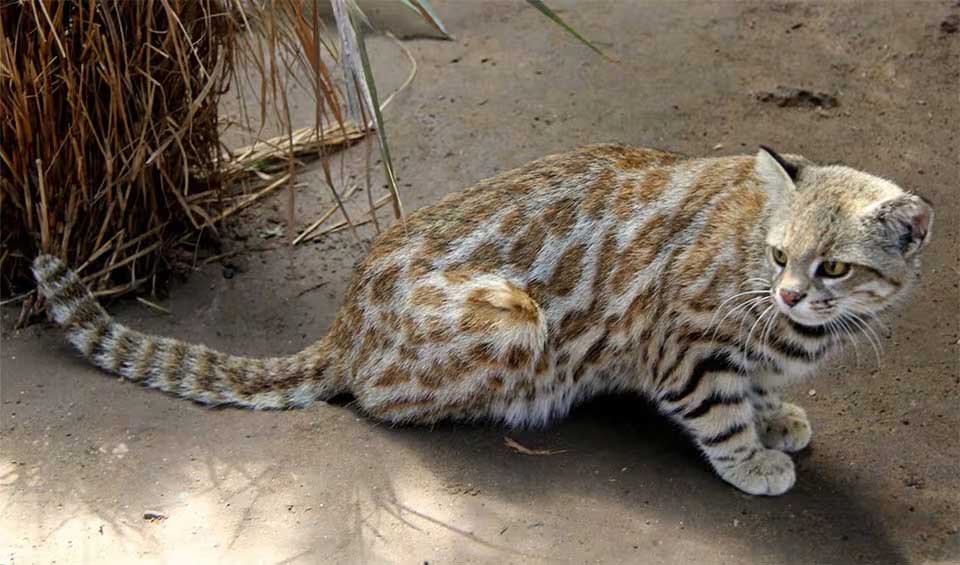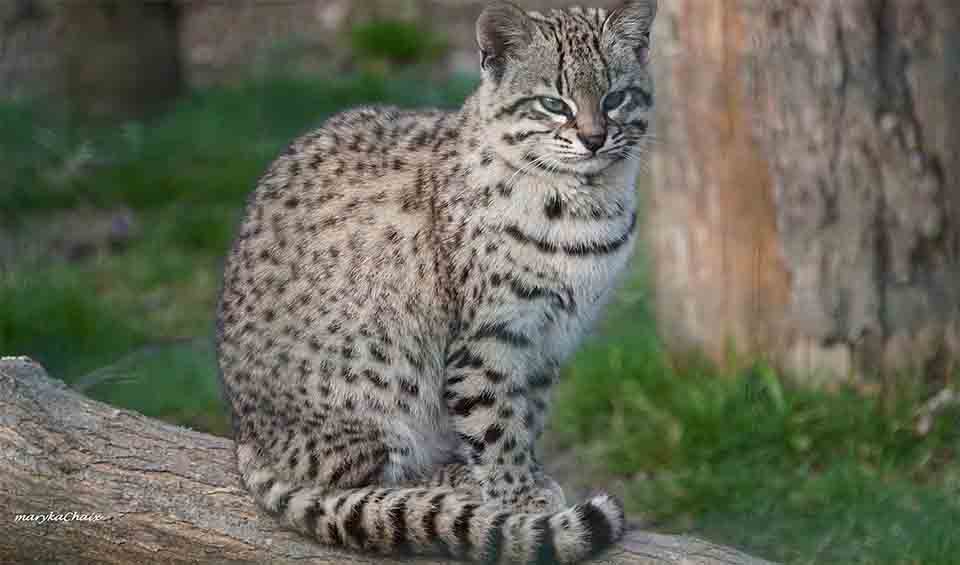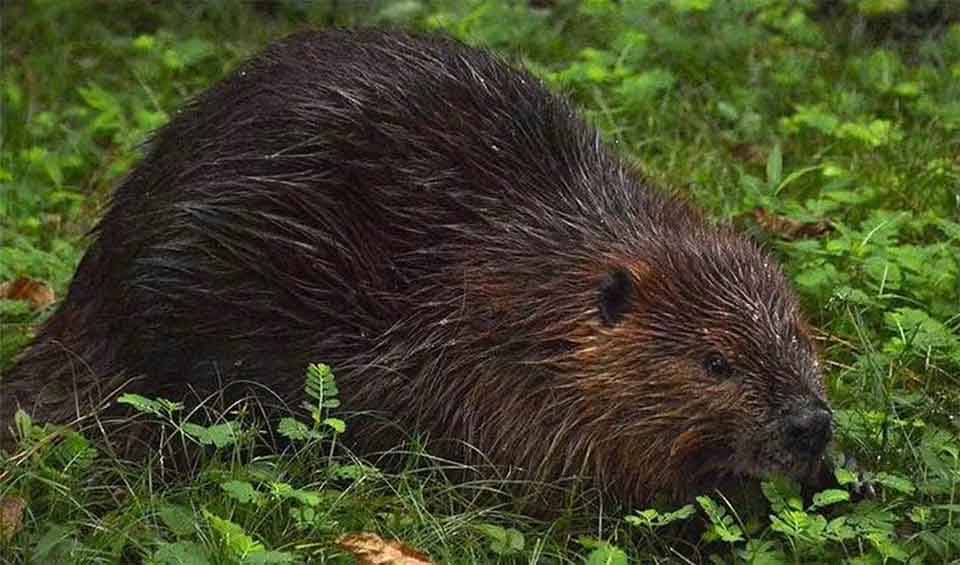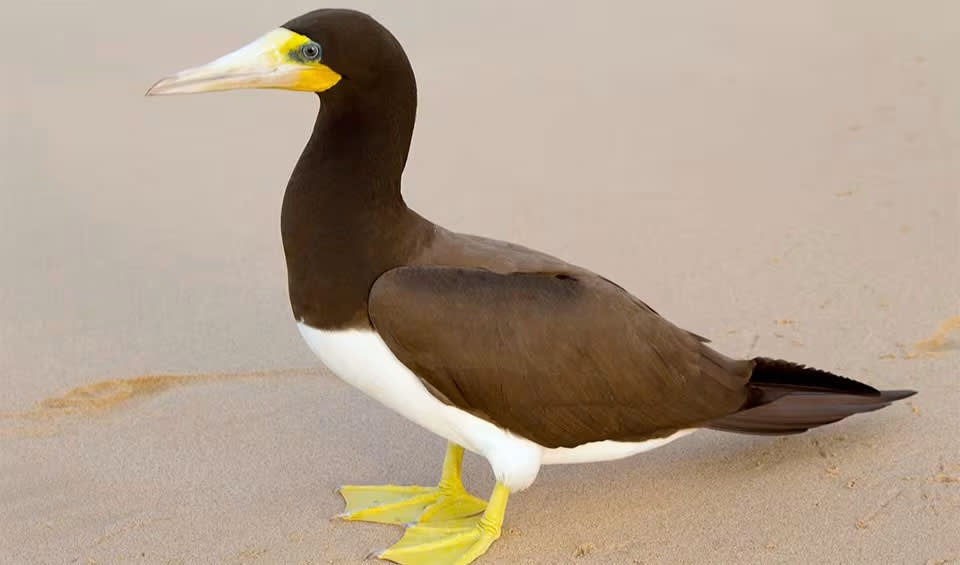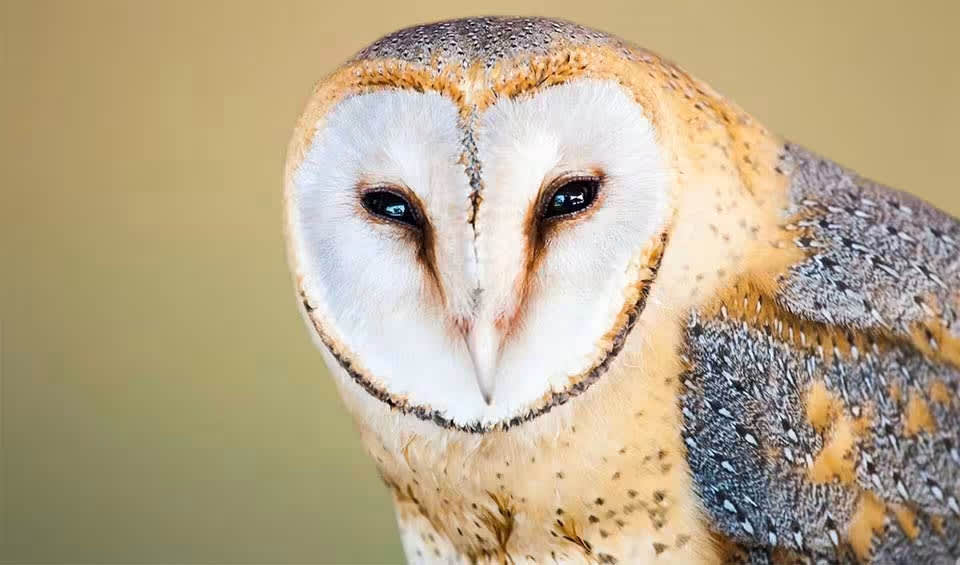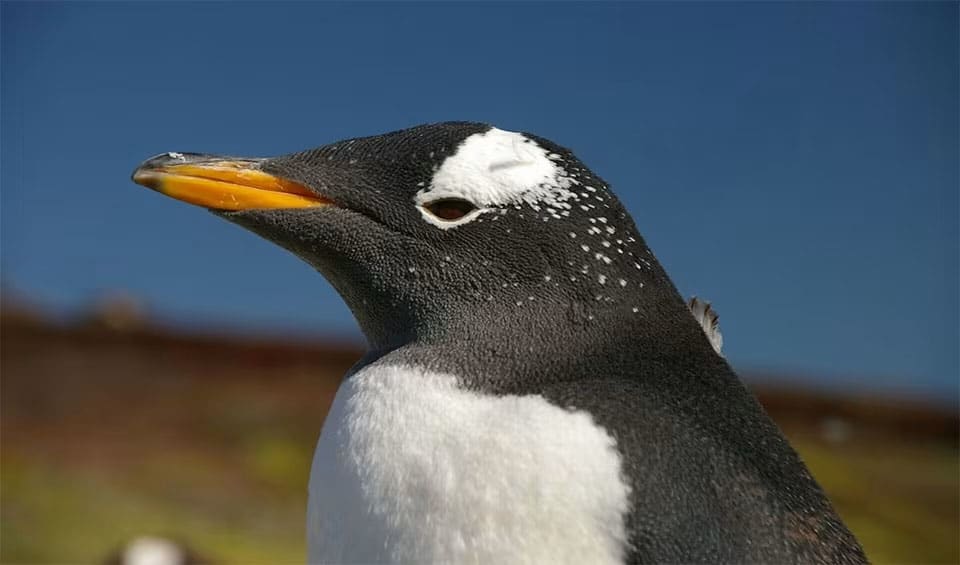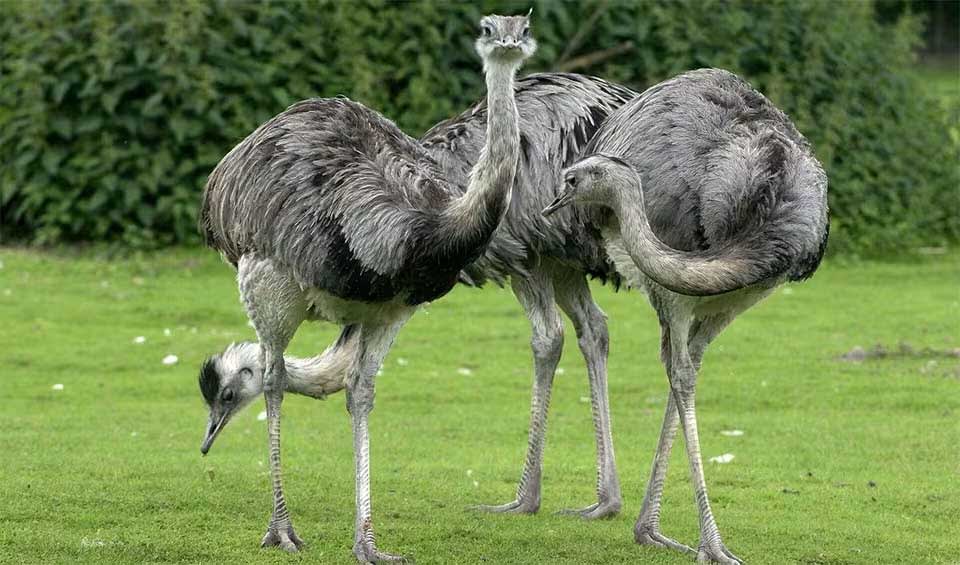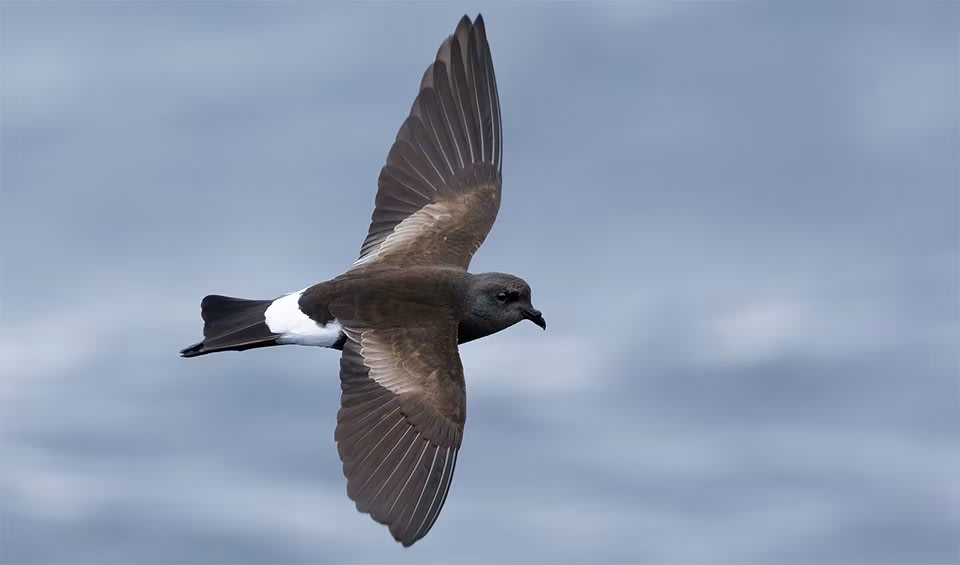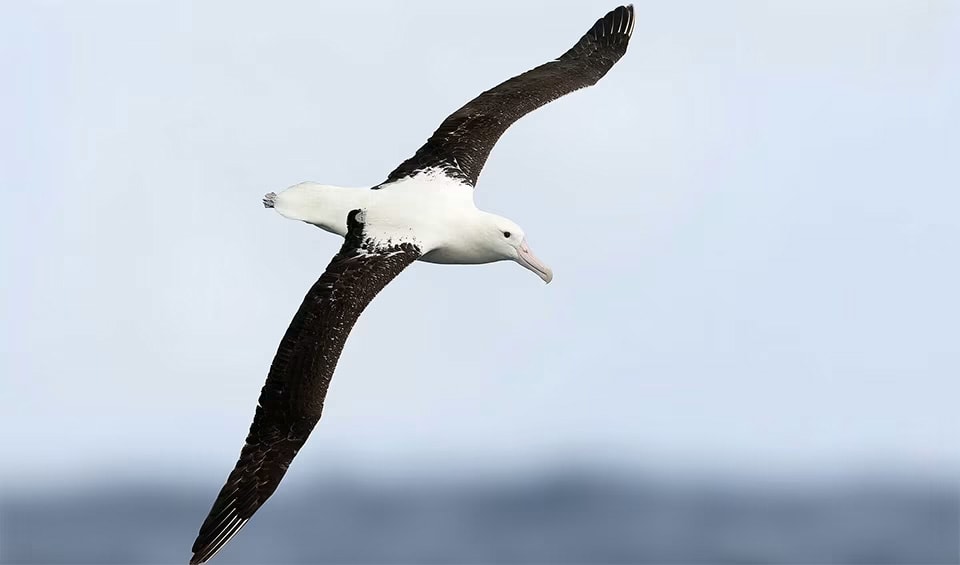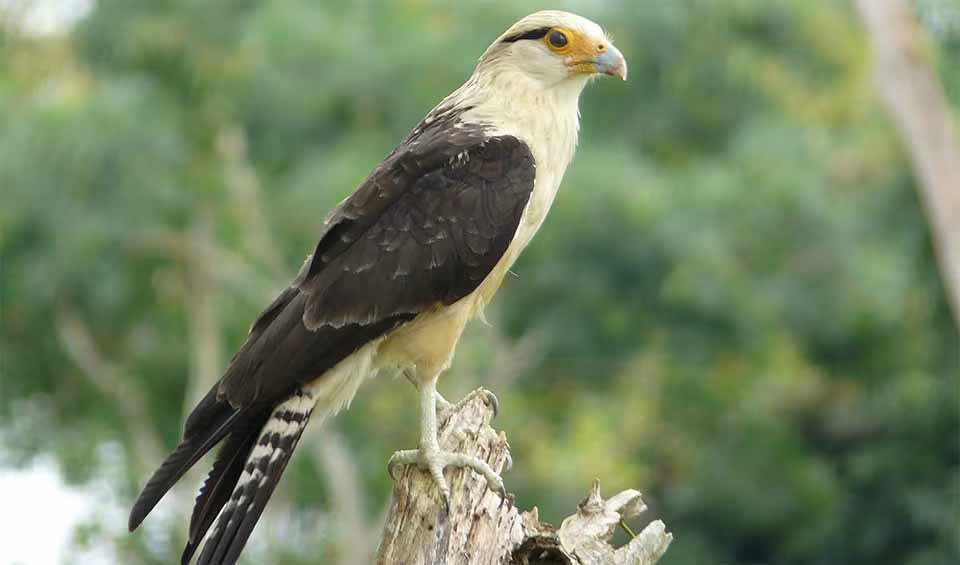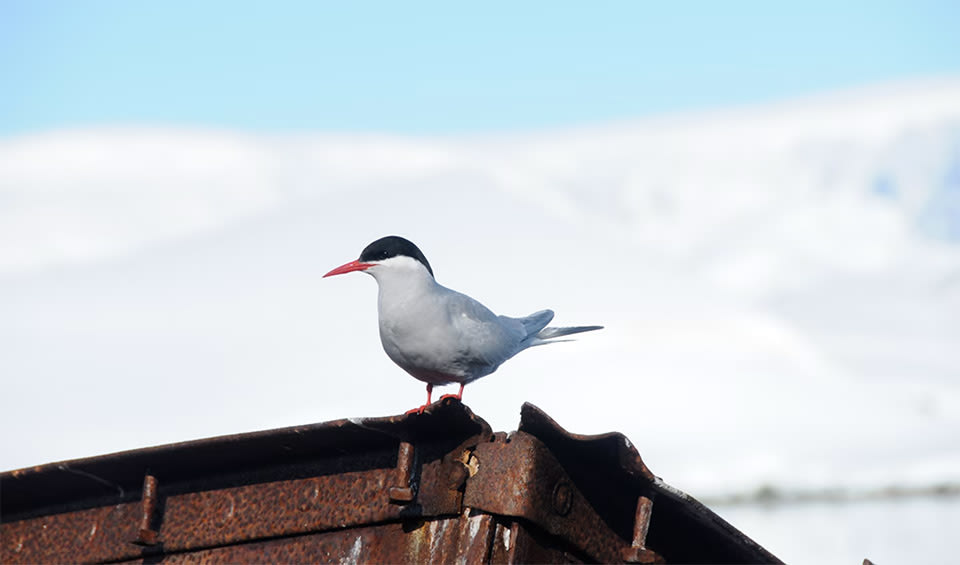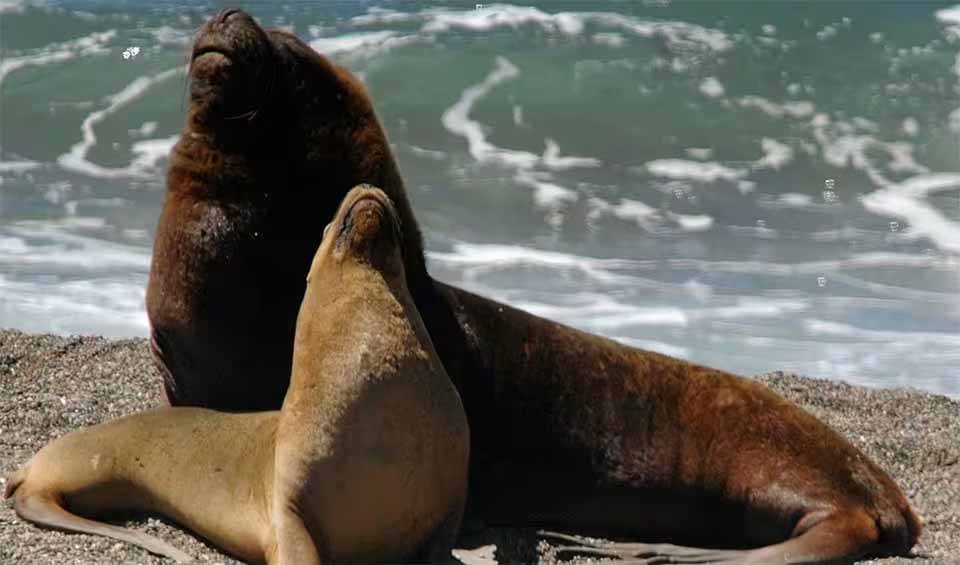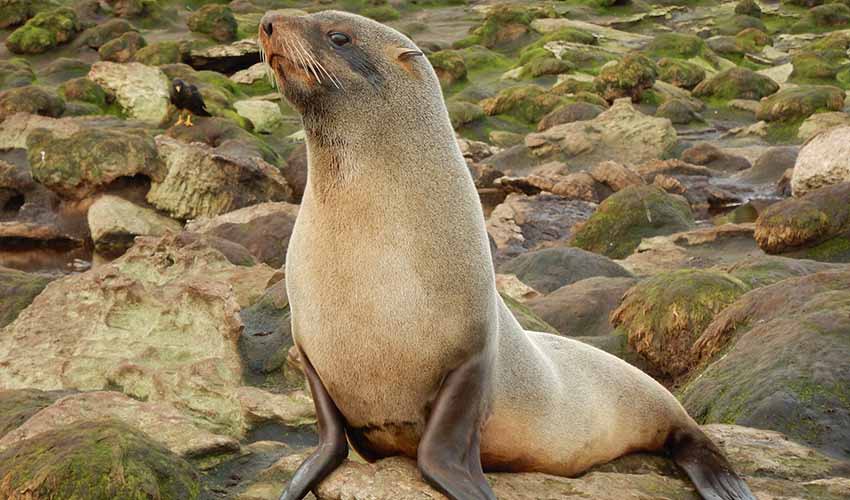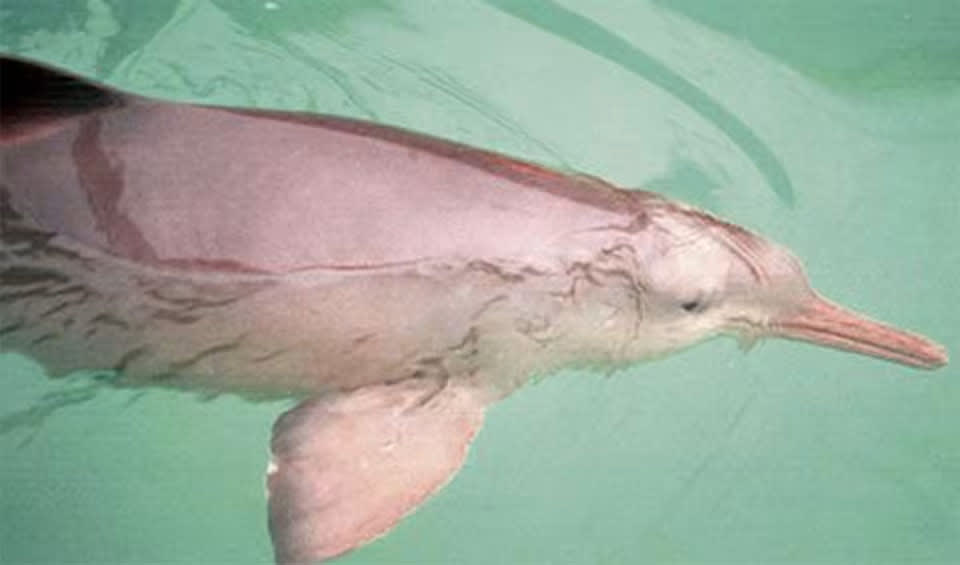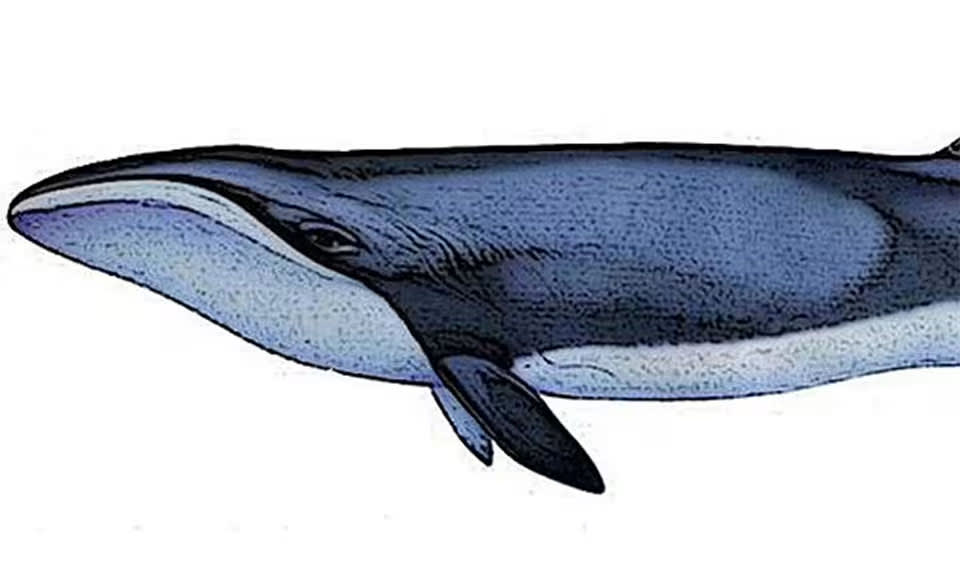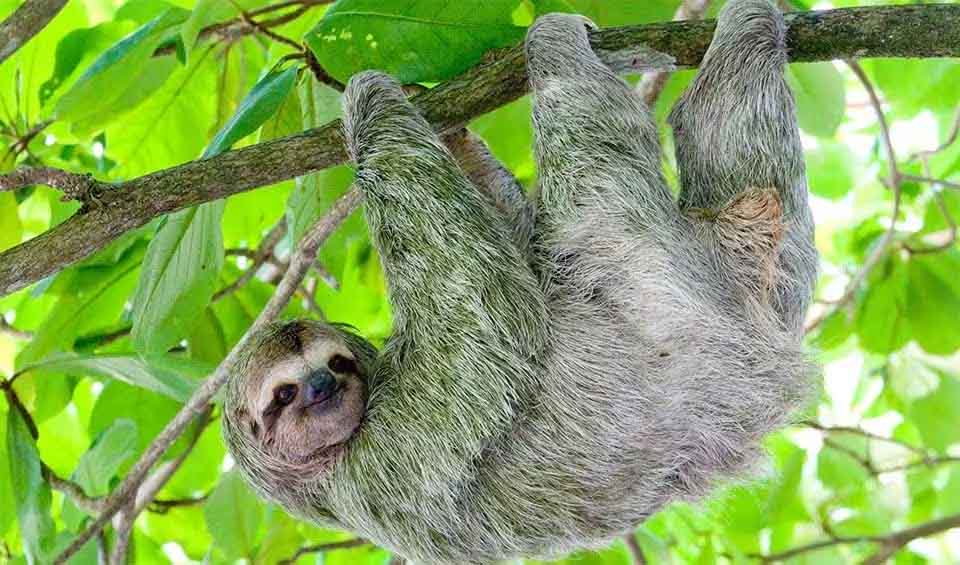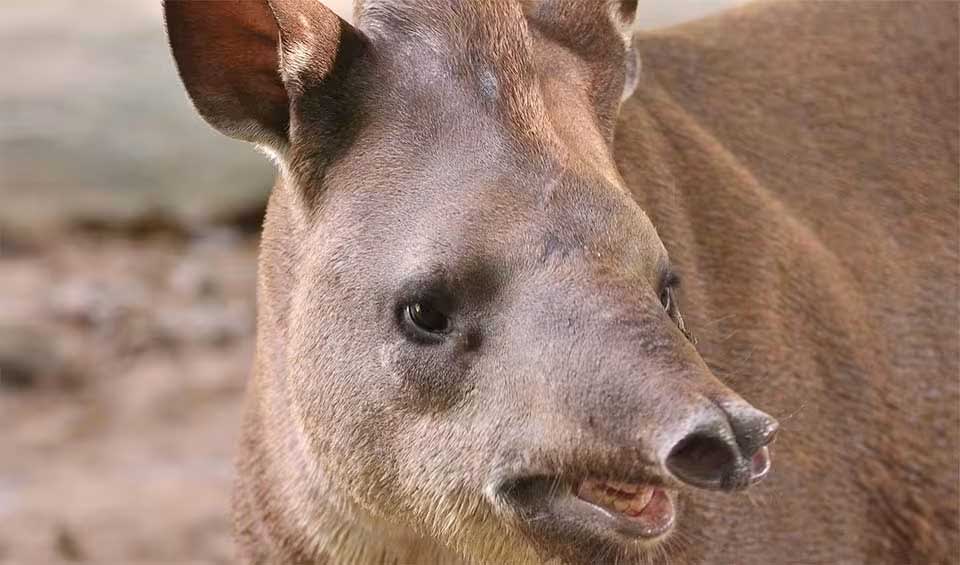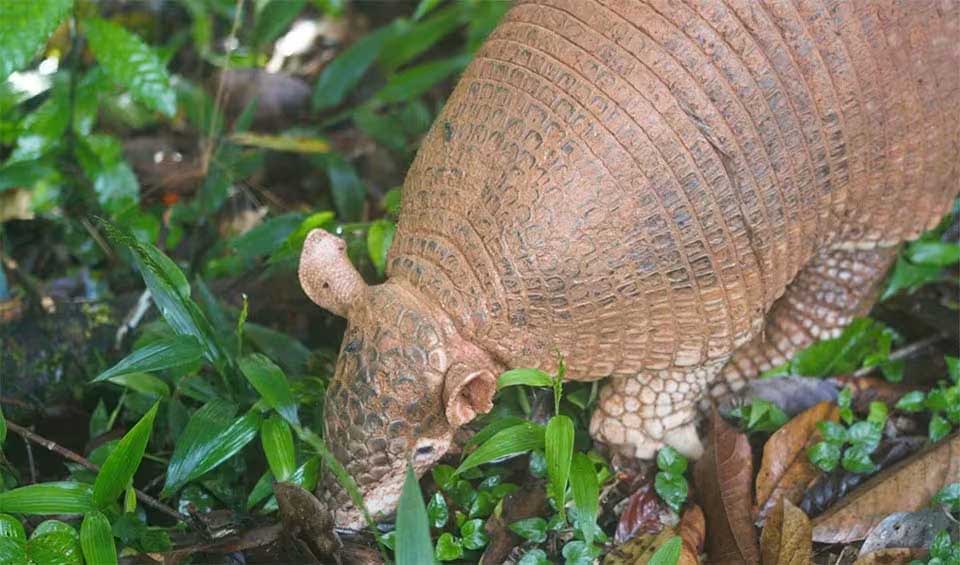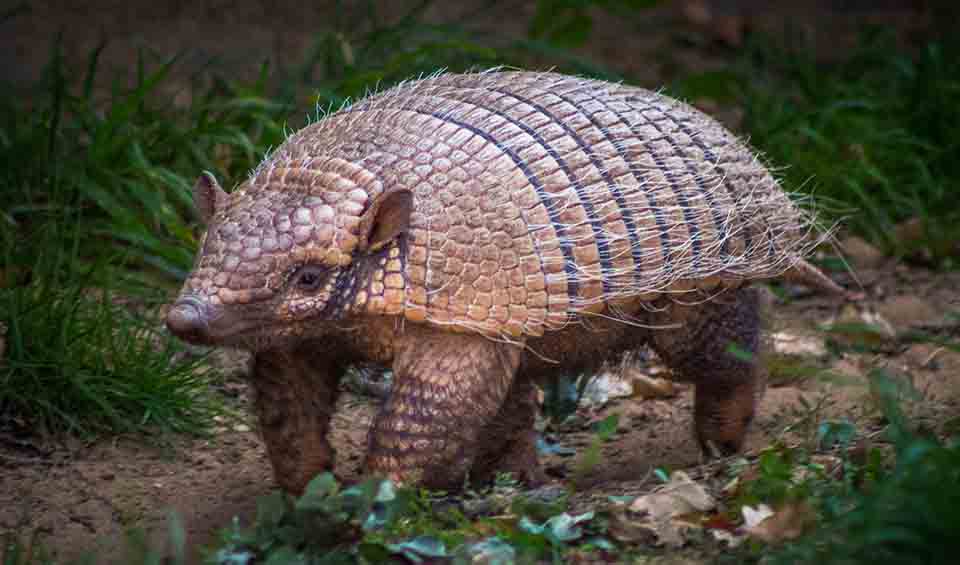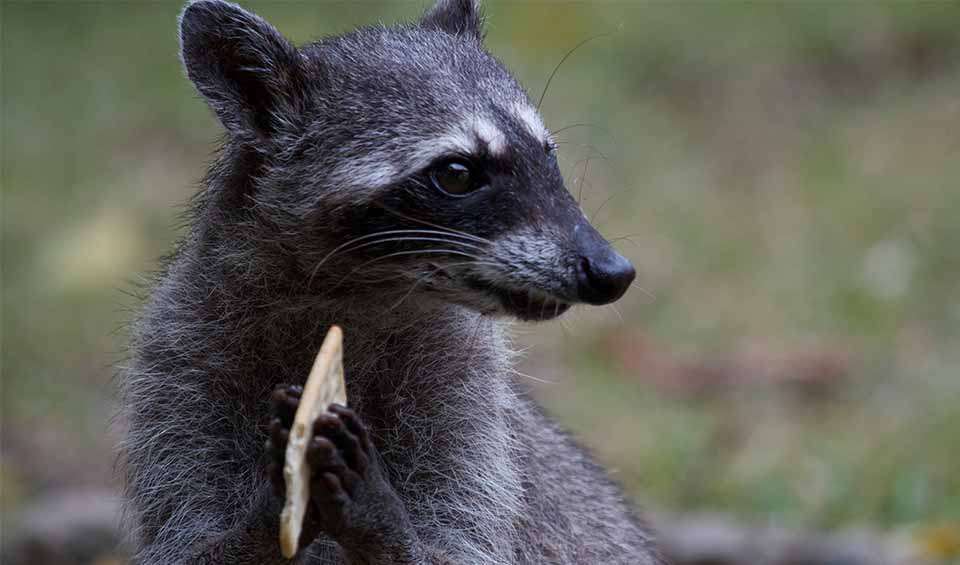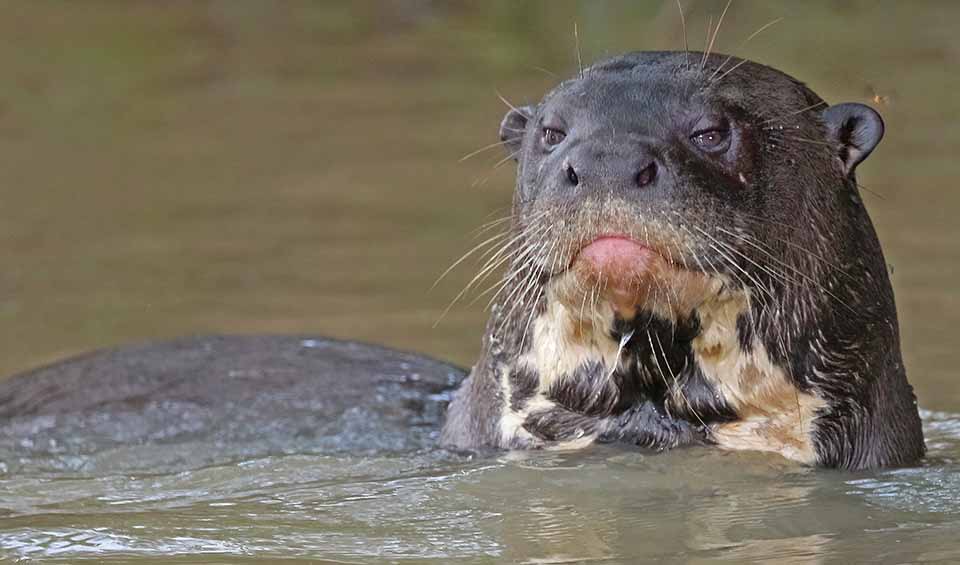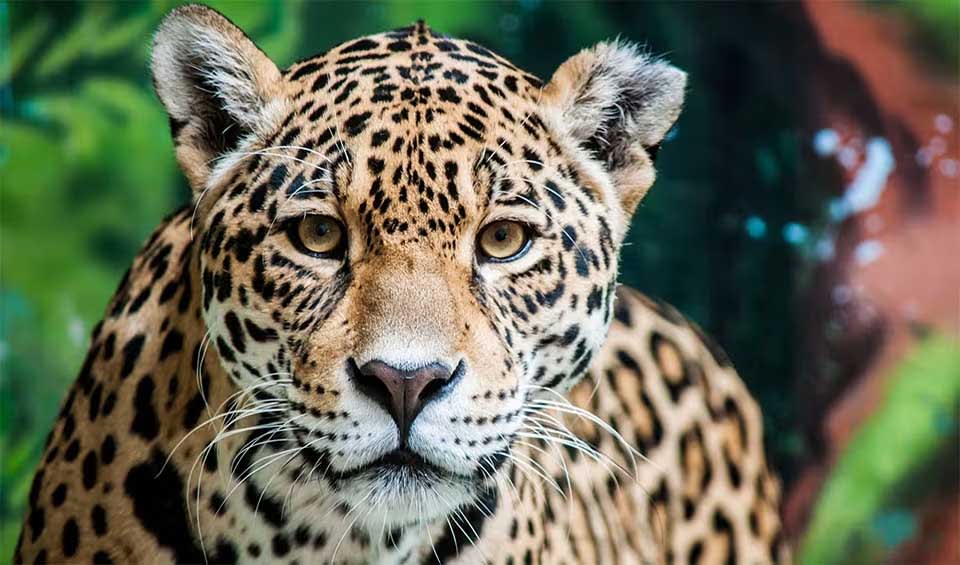Search for Argentina
California quail
Their cheerful calls, often described as sounding like they are saying “Chi-ca-go!”
Thorntail mountain lizard
Its spiny tail and armored scales give it the appearance of a tiny mountain dragon
Crabeater seal
Their misleading name comes from early explorers who mistakenly thought they fed on crabs
Sand tiger shark
May look like villains, but in truth, they’re peaceful giants of the sea
Lowland paca
The spotted rabbit of the jungle—though they are rodents, not rabbits!
Brazilian porcupine
Their long, fleshy noses give them a comical, almost cartoonish look, especially when sniffing around for fruit
Southern tamandua
One of the most effective—and quirky—pest controllers in South America’s wild landscapes
Copper iguana
A symbol of the Ventania mountain landscape—its only home
Chilean dolphin
One of the least flashy—and most specialized—dolphins on Earth
Southern bluefin tuna
One of the fastest and deepest-diving tunas
Ruddy ground dove
One of the tiniest doves in the Americas
Green ibis
Sometimes called the “Whispering Ibis”—not because it whispers, but because it’s so quiet and elusive compared to other ibises
Chaco chachalaca
A bird with a voice you won’t forget
Rufescent tiger heron
Doesn’t put its nest near the water’s edge like many of its relatives
Wood stork
The “giant of the swamp”
Green kingfisher
Have eyesight that is exceptionally keen—so much so that they can easily spot tiny fish swimming just beneath rippling water
Giant ameiva
Can move startlingly fast, often vanishing in a blur of motion when startled
Common vampire bat
Most famous — and misunderstood — of all vampire bats
Tropical kingbird
Surprisingly aggressive for a bird with a sunny name
Red tegu
One of the few reptiles known to show partial warm-bloodedness (seasonal endothermy)
Pampas deer
Known to be quite tolerant of human presence compared to other wild deer
Turkey vulture
A bird that quietly keeps the environment clean
Amazon kingfisher
Despite its name, it is not limited to the Amazon Basin
Great black hawk
One of the largest hawks in the Americas
Gray brocket
Known to freeze in place when startled, relying on camouflage rather than flight until the last moment
South American coati
Known to investigate campsites, rummage through backpacks, and even figure out how to open containers
Pichi
Looks like a blend between a tank and a teddy bear
Marsh deer
Elegant, elusive, and finely tuned to life in waterlogged wilderness
Atlantic salmon
Travels with nature’s GPS: a magnetic compass and a nose that never forgets home
Great horned owl
Often called the “tiger of the sky” because of its fierce hunting skills and bold personality
Ruddy turnstone
They flip the script — literally!
Barred forest falcon
The ghost of the rainforest — more often heard than seen
Spectacled owl
Easily recognized by its bold facial markings that resemble a pair of white spectacles
Blunthead tree snake
Looks more like a living vine or a character from a fantasy novel than a typical reptile
Black-crowned night heron
One of the most widespread and adaptable herons in the world
White-eared opossum
One of the most widespread opossum species on the continent
Molina’s hog-nosed skunk
Its pig-like nose is sensitive and flexible, helping it locate underground prey like grubs and worms
Flying steamer duck
Though this duck can fly, it’s right on the edge of being flightless
Nutria
Look a bit like a cross between a beaver and a rat
South American rattlesnake
Both feared and respected, often appearing in traditional stories and as a symbol of danger and power
Marine otter
A rare treasure of South America’s coast — small but fierce, quiet but clever
Red deer
Not only one of the largest deer species but also among the most majestic
Guanaco
The largest herbivores of the dry areas of South America
Himalayan tahr
Even from day one, they’re already scrambling up slopes alongside their mothers!
Atlantic petrel
A dark flyer of the South Atlantic, faces a tough fight against invasive mice
American kestrel
The smallest of falcons in the entirety of America, but you would be mistaken to take this bird lightly
Emperor penguin
Aptly named the biggest of the Penguin species & Olympic diver of the bird world
Saffron toucanet
They have a unique habit of storing excess food by hiding it in tree crevices, which they may return to later
European starling
Brilliant mimics, they can copy bird calls and even human-made sounds like car alarms and ringing phones!
Brown howler
Their howls can be heard up to 5 km (3 miles) away!
Lesser black-backed gull
A common sight in coastal regions throughout the Northern Hemisphere
Yellow anaconda
While it’s one of the largest snakes in the world, it’s smaller than its green cousin
Hooded grebe
Easily recognizable by its distinctive black hood, which it can raise or lower at will
Chital
Also known as “barking deer” because of their loud, barking alarm calls
Boat-billed heron
Got its name from its distinctive, boat-shaped bill, which is wider than it is tall
Antarctic fur seal
Has one of the warmest fur of any mammal
Northern giant petrel
Well-adapted to the cold Arctic climate and can withstand temperatures as low as -50°C (-58°F)
White-faced whistling duck
Loud birds with a distinct three-note whistling sound
King penguin
With their stately waddle and regal demeanor, they are the undisputed monarchs of the Antarctic ice
Blue-and-yellow tanager
Known for their bright plumage and lively behavior, making them some of the most recognizable birds in the tropics
Adelie penguin
A small, but mighty bird dressed in a tuxedo and living in one of the coldest places on Earth
Lineated woodpecker
With its strong, sharp beak, it’s a master at pecking holes into trees to find tasty bugs hiding inside
European goldfinch
Can hang upside down while feeding!
Muskrat
They’re kind of like big, furry rats but with a different shape
Groove-billed ani
Got a long tail, a big head, and a curved bill with little grooves on it – that’s where its name comes from
Black oystercatcher
Don’t let their name fool you; they actually prefer to eat mussels and limpets rather than oysters!
European hare
Unlike rabbits, they don’t live in burrows, instead, they make shallow nests in the grass called forms
Chaco tortoise
Can go for a long time without drinking water because they get enough from the plants they eat
Barn swallow
Most common and widely distributed swallow globally
Blackbuck
Once hunted extensively for their meat and beautiful horns that pushed their numbers to dangerously low levels
Patagonian mara
Can outrun most predators on the pampas, reaching speeds of up to 45 km/h (28 mph)!
Crested caracara
Got the looks of a hawk with the scavenging habits of a vulture
Llama
Think of camels, but minus the hump!
Southern lapwing
Fearless defenders of their nests and chicks, often taking on much larger animals or humans if they perceive a threat
Great kiskadee
This bird is a real chatterbox, constantly announcing its presence with its loud, three-part call – “kis-ka-dee!”
Pantropical spotted dolphin
A champion swimmer and a social butterfly of the warm seas
Burrowing owl
They don’t build their own nests – they cleverly take over burrows abandoned by prairie dogs, ground squirrels, or even tortoises!
Common bottlenose dolphin
Known for their acrobatic leaps, twisting and turning gracefully as they jump completely out of the water
Blue-fronted amazon
Capable of learning dozens of words and phrases with remarkable clarity
South Andean deer
National symbol of Chile and appears on the country’s coat of arms, representing the nation’s wildlife heritage and natural beauty
Rufous hornero
Remarkable architects that construct domed nests from mud and straw
Rufous-bellied thrush
Its song is often associated with the arrival of spring and is a symbol of joy and renewal
Water buffalo
The “living tractors of the East”—vital in traditional agriculture, particularly in Asia
Argentine black and white tegu
A popular pet in the United States, but it is also considered an invasive species in Florida
American bullfrog
Introduced to many regions where it is now considered an invasive species
White-lipped peccary
They can spend up to two-thirds of their day traveling and feeding
Black-and-chestnut eagle
A magnificent bird of prey, blending into the forest with its striking colors and ruling the skies with its impressive wingspan
Shortfin mako shark
Speed and power embodied, they rule the seas with their sleek bodies and jaw-dropping leaping prowess
Basking shark
Majestic giants of the sea, they peacefully glide through the ocean with mouths agape, filtering the waters for sustenance
Oceanic whitetip shark
Opportunistic predators of the open ocean, their aggressive and persistent feeding behaviour strikes fear into the hearts of their prey
Whale shark
Gentle giants of the sea, with mouths wide open to filter the ocean’s bounty
Great white shark
Majestic ocean predators, embodying power, speed, and precision in their pursuit of prey
Loggerhead sea turtle
One of the largest and strongest sea turtles in the world
Glyptodon clavipes
The Pleistocene armadillo with a car-sized shell and a lethal tail
Saber-toothed tiger
Despite its name, this animal was not a true tiger, nor was it related to any modern cat
Giant ground sloth
Discover the mystery of a prehistoric giant: an enormous herbivore with powerful claws and a tragic fate
Andean mountain cat
One of the rarest wild cats, until recently, most data about them were collected from 2 photographs, 3 skull samples, and 14 skin samples
Kodkod (guiña)
One of the smallest cats, native to central and southern Chile-Argentina
Culpeo
Discover the resourcefulness and adaptability of this cunning fox-like predator that’s mastered life in the rugged high-altitude terrain
Southern tiger cat
A majestic predator that rules the jungle with its stunning stripes, fierce hunting skills, and impressive vocalization abilities
Margay
These wild cats are cute, intelligent, agile, and well-adapted to inhabiting tropical and subtropical forests
Pampas cat
Survival of the fittest? This cat takes it to a whole new level, always ready to pounce and conquer any habitat
Geoffroy’s cat
Small but mighty, this cat is a stealthy predator that swims, climbs and hunts with sass and style
Pampas fox
Small, sly, and swift – it may be pint-sized, but it packs a punch when it comes to survival in the grasslands
Capybara
Communicate using various vocalizations such as whistles, whinnies, and growls
North American beaver
To be or not to beaver? Beavers are armed with transparent eyelids that act as goggles to see underwater
Anhinga
Their neck vertebrae have a hinge mechanism that allows it to dart its long neck and pierce its prey quickly
Brown booby
An impressively acrobatic bird that can catch flying fish mid-jump
Barn owl
The most cosmopolitan of owls with home ranges extending across the globe
Magellanic penguin
Their call, often compared to a donkey’s bray, is how they got their name in some regions
Erect-crested penguin
The endangered cousin of the Fiordland penguin
Macaroni penguin
The penguin with a cool tiara
Chinstrap penguin
The most grumpy penguin with a helmet and a chinstrap!
Gentoo penguin
Bushy tailed fastest diving penguin
Greater rhea
The largest native living bird of America
Lesser rhea
The cute birds from South America
Wilsons storm petrel
This species is found in all world oceans except the north Pacific Ocean
Leachs storm petrel
These petrels stylishly ride the ocean waves like they own the winds
Manx shearwater
Impressive flights but clumsy walking on the ground are observed in these birds due to awkward legs
Royal albatross
These mighty birds have the longest wingspan, second only to wandering albatrosses
Wandering albatross
The humongous bird with the largest wing span of 3.5 m (11.5 ft) – seems straight out of a fantasy movie
Red-breasted toucan
A small beaked toucan that looks like it came straight from a Halloween party
Toco toucan
The largest toucan there is with a long and serrated beak
Roseate spoonbill
An easily recognizable bird due to its pink body and spatulate bill
Scarlet ibis
The flocks of this striking self-descriptive bird are a sight to behold
House sparrow
The most widely dispersed wild bird
Scarlet flycatcher
The scarlet ambush hunter
Limpkin
They don’t need salt, bamboo sticks, or forks to deshell a snail – they have a well-adapted bill to do the job
Yellow-headed caracara
A common scavenger bird that cleans up the roads of Central and South America
Peregrine falcon
At the speed of over 321 km/h (200 mph), this bird outraces a Formula1 car
Jabiru
One of the tallest flying birds of Americas
Black-winged stilt
Elegant long-legged wader, common almost worldwide
Magellanic plover
On the brink of disappearance due to habitat destruction, global warming, and overgrazing
Snowy sheathbill
Try playing hide and seek with this bird in snowy lands
Arctic tern
This bird can give any cross-country runner a run for their money
Common tern
This bird holds the record of the longest distance flown by any bird in recorded history
Rufous-bellied seedsnipe
They appear out of nowhere and disappear in a blink
King vulture
The most colorful vulture, with the orange cruncle
Andean condor
The largest and heaviest raptor in the world
Black-legged seriema
Gear up to get your minds changed if you think all birds love flying
Red-legged seriema
Did someone say birds don’t participate in marathons? Wait, we have a worthy contestant here
Southern screamer
Its name is very accurate—these birds can be ear-splittingly loud!
Harpy eagle
The world’s most spectacular and most robust eagle species serves a critical ecological role in the ecosystem they live in
Osprey
One of only six land-birds with a cosmopolitan distribution habituating all continents except Antarctica
Southern elephant seal
The largest member of the order Carnivora, adult males, can be six times larger than polar bears!
South American sea lion
Unfortunately, they are commonly killed for their habits of damaging fishing nets and stealing fish from fishing and farming operations
South American fur seal
Its thick, luxurious fur was once heavily hunted for the fur trade
Subantarctic fur seal
Once nearly wiped out, it now thrives in great numbers
La Plata dolphin
The smallest of the river dolphins and the only one that swims in saltwater oceans
Pygmy right whale
The smallest baleen whale
Southern right whale
Most common of right whales, cruising the southern oceans
Monito del monte
A bad omen or a harmless seed disperser?
Brown-throated sloth
Cute but lazy species harmlessly sleep in the trees for 14 to 16 hours a day
Giant anteater
These specialist predators of termites and ants are not immune to ant bites
Brazilian tapir
Flee and dive into the water when facing a predator and remain deep under the water until the predator leaves
Pink fairy armadillo
Nicknamed “sand swimmer,” able to burrow through the soil as fast as a fish swimming in the water
Giant armadillo
The largest living armadillo, growing up to 1.5m (5 ft) in length, yet it feeds on tiny termites!
Six-banded armadillo
Able to swim and will shallow air just before entering the water to assist with buoyancy
Nine-banded armadillo
Found all over the Americas, it is the most widespread species of all armadillos
Crab-eating raccoon
Despite the common name, they do not feed on crabs exclusively
Tayra
Widespread in tropical and subtropical forests Central and South America
Giant otter
Don’t be fooled by their harmless appearances; they can hunt caiman, piranhas, and anacondas in the wild!
Cougar
The most widespread large mammal of the Americas: from Canada’s Yukon to the Andes in South America
Jaguarundi
Secretive and solitary, inhabiting various habitats of Central and South America
Ocelot
They are picky eaters, often plucking off all the furs or feathers of the prey before start eating them
Pantanal cat
With a purrfect physique and sharp instincts, this cat reigns supreme as the ultimate predator of the wetlands
Jaguar
This solitary cat is America’s largest feline and the world’s third, after the tiger and the lion
Spectacled bear
The last surviving bear species of South America, native to the Andes mountains
Bush dog
First discovered as a fossil in Brazil, before ever witnessed – it was believed to be extinct
Crab-eating fox
During the wet season, they search for crabs in muddy floodplains
Royal penguin
Got their name from the striking yellow crests and facial plumes that adorn their heads, making them look quite regal
Maned wolf
With an identity of its own, it’s neither a wolf nor a fox — however, wearing long ears is probably a fashion statement
Chacoan peccary
Also known as tagua and it is the last existing species of its genus, with only 3000 individuals present today
Collared peccary
Suffering from poorly developed vision, they heavily rely on vocalization to communicate
Vicuña
One of the few wild animals to have been used for obtaining wool without domestication
Black howler
Allomothering is a common activity: females of a group display communal care for each other’s infants
Leatherback sea turtle
The mysterious diver of the ocean is the largest and only sea turtle without a hard shell and scales
Magellanic iguana
A tree dwelling reptile native to Chile and Argentina
Boa constrictor
A small genus of Large snakes, strangling their prey endemic to the Americas
Yacare caiman
Jacare caiman, raguayan caiman, piranha caiman, red caiman, southern spectacled caiman! It has no shortage of nicknames
Ringed caecilian
They do not just look like snakes, but they might also be able to deliver a nasty bite

